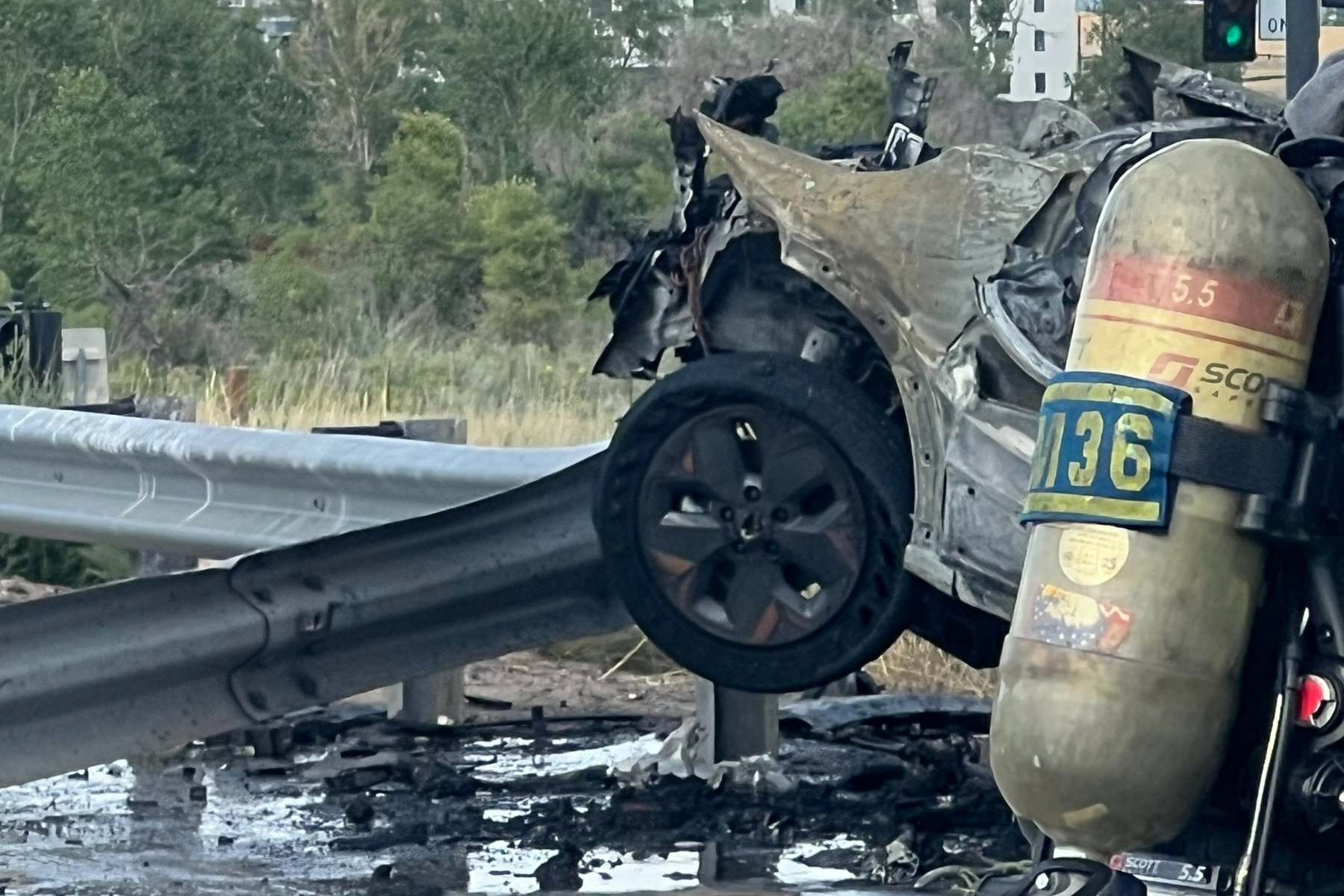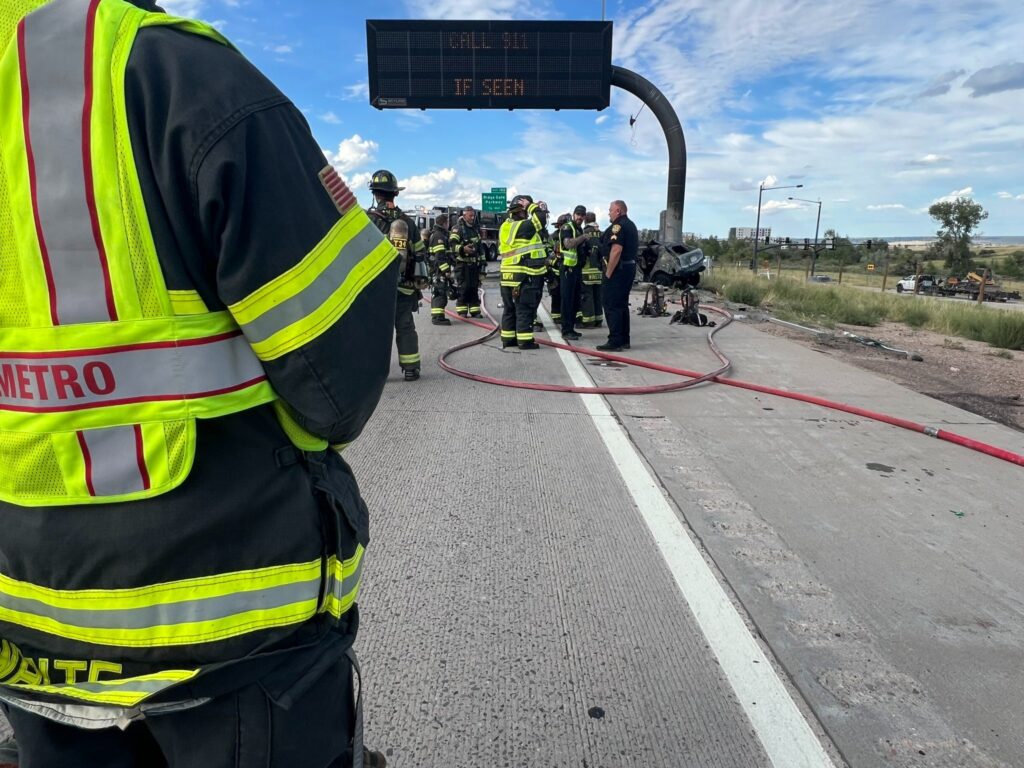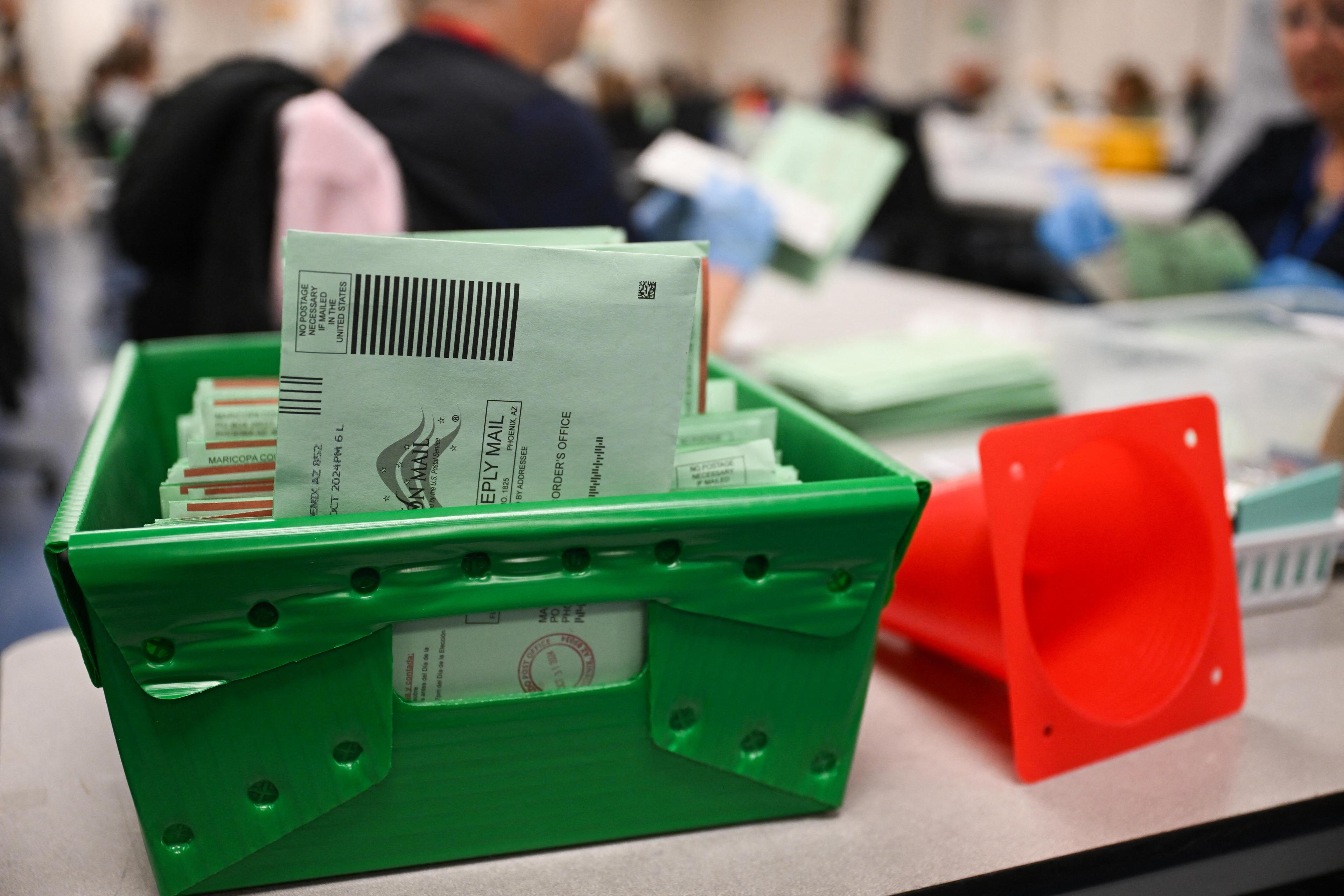
On Monday, a fiery electric vehicle crash killed a driver and shut down several lanes of Interstate 25. But while the use of battery-powered vehicles is growing in Colorado, safety groups say EVs don’t appear more prone to catching fire than a typical car.
Each year, fire departments respond to around 170,000 vehicle fires annually, mostly in passenger cars, according to the National Transportation Safety Board. Between 2013-2017, that averaged out to a vehicle fire every 2-3 minutes, data from the National Fire Protection Association show.
There are fewer EV fires than compared to typical, gasoline-powered vehicle fires, the fire association says, but high-quality data on their exact frequency is sparse. The Colorado Department of Transportation’s crash data does not differentiate between EVs or non-battery vehicles and federal agencies do not maintain an EV fire database.
One study estimated the incidence of EV fires at 25 fires per 100,000 vehicles, but its findings appear limited and its data sources have come into question, according to a report in Car and Driver.
The Tesla Model Y is the most common EV in Colorado, according to May 2024 state and federal data. Tesla’s own analysis of their vehicle fire risk shows that Tesla vehicle fires occur much less frequently than the U.S. average for all vehicles.
'Definitely Harder to Put Out'
EV fires burn differently than gasoline-powered car fires, which can complicate how firefighters respond. Most EVs on the market today are powered by lithium-ion batteries, which also power devices like cell phones, laptops and digital cameras. The EV battery modules are much larger than personal electronics, however, and when they catch fire, they can succumb to a phenomenon called thermal runaway.
Thermal runaway releases heat and flammable gasses into the air near the battery, which then creates more heat and can even lead to the battery exploding. Thermal runaway, along with the fact that lithium-ion cells can reignite after being extinguished, means EV batteries can burn longer than fires from a typical car or pickup.
In 2020, the National Transportation Safety Board highlighted a litany of safety risks to first responders of EV fires, including electric shock and battery reignition. In one instance, firefighters poured thousands of gallons of water on top of an EV, not realizing that the battery compartment was actually on the bottom. The battery then reignited multiple times on a tow truck and in a tow yard.
“Electric vehicle fires are definitely harder to put out than a combustion fire,” said Brian Willie, a public information officer with South Metro Fire Rescue, which responded to Monday’s EV crash.


But how exactly fire crews extinguish an EV fire depends on the specific situation and its location, according to Todd Bower, an assistant chief with the Denver Fire Department and adjunct professor at Metropolitan State University of Denver.
“We have dry chemical extinguishers that can help in the fight depending on what’s really burning,” Bower said. “It’s usually using copious amounts of water.”
Bower said the Denver metro area typically has ample water supply from fire hydrants, which can supplement the 500-gallon tanks that are common on its trucks. But some EV fires have required 36,000 gallons of water to extinguish.
South Metro Fire Rescue, which covers the Southern Denver metro area, uses car fire blankets as part of its EV fire arsenal. Large blankets are nearly 600 square feet and are thrown over burning vehicles to smother the oxygen supply to the burning battery. The blankets, which can run $2,000 for a reusable model, don’t fully extinguish the flames but help the fire cool down until the battery has completely burned, according to the manufacturer.
Other fire departments are taking cues from how South Metro crews are adapting to fighting a new kind of vehicle fire, Willie said. “We get calls on a daily basis from the videos we put out and from other agencies across the nation that are using our guidelines on using the blankets,” Willie said.
South Metro’s typical process for extinguishing an EV fire is to call in a hazmat crew along with a fire truck and to use a fire blanket to extinguish the flames as much as possible, Willie said. A tow truck then relocates the blanketed EV to a yard, with a fire truck following close behind. The EV is isolated on its own for at least “a couple weeks” to let the fire completely die out.
Because Monday’s fire was originally called in as a hybrid car, and it was largely extinguished with water, firefighters did not deploy a fire blanket, Willie said.
More EVs mean first responders are getting better trained in responding to their fires. The International Association of Fire Chiefs maintains an Electric Vehicle Fire Bulletin for departments, which recommends securing up to 8,000 gallons of water from a tanker if there’s no access to a hydrant, and monitoring whether batteries reignite. The National Fire Protection Association also publishes guidelines from EV manufacturers for how firefighters should handle specific cars during emergencies.
While there have been some notable EV fires recently on the Front Range, there is no concrete, publicly available data that suggests EVs are more prone to fires than gasoline-powered vehicles.
“What I've found responding to calls like what South Metro did just recently is that we don't have an uptick on one particular type of vehicle or system that is catching fire,” Bower, with the Denver Fire Department, said.



